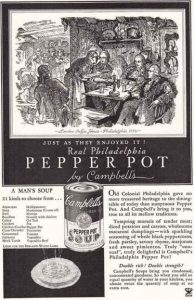Caribbean
Philadelphia boasts a vibrant Caribbean community made up of nearly 30,000 people, mainly from Jamaica, Haiti, and the Dominican Republic. Over 200 years ago, trade between Philadelphia, Cuba, and the Anglophone Caribbean thrived. In 1923, a survey identified a "Spanish Colony" comprising immigrants from Latin America, the Caribbean, and Spain.
Refugees and exiles from the Caribbean found sanctuary in Philadelphia throughout history. After the Haitian Revolution in 1791, refugees arrived from Saint Domingue, now Haiti. Following the Cuban Revolution of 1959, families sought refuge in Philadelphia, with some arriving through the "Freedom Flights." The Haitian community was formed in part by 20th-century refugees.
Additionally, Philadelphia's connection with the Caribbean expanded through work programs and trade relations. Cuban cigar makers settled in the late 19th century, while Puerto Rican workers were recruited post-WWII. Direct flights between Philadelphia and San Juan led to significant Puerto Rican population growth.
Today, the Caribbean community thrives alongside other Latino groups, contributing to Philadelphia's diversity. Haitian and Jamaican communities continue to expand, while Dominicans and Mexicans represent recent surges in population.
The Caribbean community's contributions to Philadelphia are significant and enduring, shaping the city's cultural landscape and enriching its heritage.

Dominican Republic
POPULATION
15,963 (U.S. Census 2010)
WHERE THEY LIVE
Dominicans are settling largely in North Philadelphia, in West Kensington, Hunting Park, Fairhill, Harrowgate, Richmond, Juniata Park, Feltonville, Fernrock, and Olney. There are also small numbers of Dominicans settling in West Philadelphia and the Northeast.
Dominicans are now the second-largest Hispanic group in Philadelphia. The city has the 6th largest Dominican population in the US.

Haiti
POPULATION
11,000
REGION / NEIGHBORHOOD
Haitians live in Northeast Philadelphia, Olney, East Oak Lane, West Oak Lane, Logan, Cheltenham, Jenkintown, West Philadelphia, and Delaware County.
Many Haitians move to Philadelphia from other cities in the U.S. that have large Haitian communities, such as New York.

Jamaica
POPULATION
10,000
REGION / NEIGHBORHOOD
Jamaicans live throughout Philadelphia. Many live in West Philadelphia, North Philadelphia, Olney, Germantown, and East and West Oak Lane. Jamaicans also live in Delaware, Montgomery and Chester counties, as well as in New Jersey.

Global Connections
Philadelphia Pepper Pot
 Philadelphia pepper pot, a spicy stew-like dish comprised of tripe, other inexpensive cuts of meat, vegetables, and an abundance of spices and hot peppers, is related to the pepper pot soup of the Caribbean region. By the early nineteenth century, the dish had developed characteristics making it uniquely Philadelphian. Philadelphia pepper pot became popular throughout the country before declining in the early twenty-first century. Although it disappeared from most store shelves and menus, pepper pot could still be found in select restaurants in the Philadelphia area.
Philadelphia pepper pot, a spicy stew-like dish comprised of tripe, other inexpensive cuts of meat, vegetables, and an abundance of spices and hot peppers, is related to the pepper pot soup of the Caribbean region. By the early nineteenth century, the dish had developed characteristics making it uniquely Philadelphian. Philadelphia pepper pot became popular throughout the country before declining in the early twenty-first century. Although it disappeared from most store shelves and menus, pepper pot could still be found in select restaurants in the Philadelphia area.
Did you know...
this soup represents our World Heritage City Philadelphia in the OWHC World Heritage Recipes?



